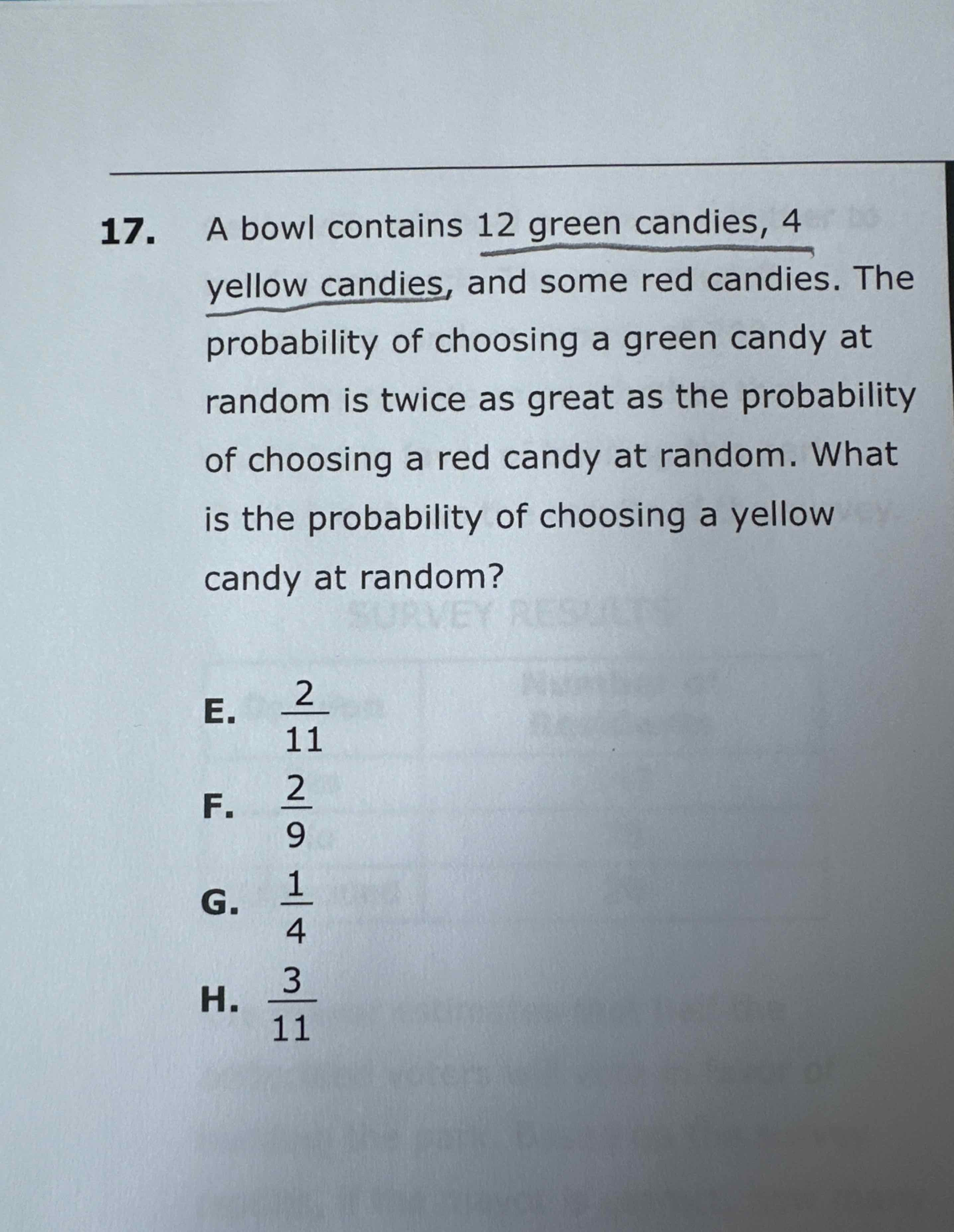AI tutor
Welcome to Bytelearn!
Let’s check out your problem:

A bowl contains green candies, yellow candies, and some red candies. The probability of choosing a green candy at random is twice as great as the probability of choosing a red candy at random. What is the probability of choosing a yellow candy at random?E. F. G. H.
Full solution
Q. A bowl contains green candies, yellow candies, and some red candies. The probability of choosing a green candy at random is twice as great as the probability of choosing a red candy at random. What is the probability of choosing a yellow candy at random?E. F. G. H.
- Identify Red Candies: Let's find out how many red candies there are. We know the probability of picking a green candy is twice that of picking a red candy. Let's denote the number of red candies as . The total number of candies is (green) + (yellow) + (red) = .
- Calculate Probability Equation: The probability of picking a green candy is , and the probability of picking a red candy is . Since the probability of picking a green candy is twice that of a red candy, we have:.
- Solve for Number of Red Candies: Solving the equation: ,,.
- Calculate Total Number of Candies: Now, we know there are red candies. The total number of candies is .
- Calculate Probability of Yellow Candy: The probability of picking a yellow candy is the number of yellow candies divided by the total number of candies, which is . Simplifying this gives:.
More problems from Multiplication with rational exponents
QuestionGet tutor help
QuestionGet tutor help
QuestionGet tutor help
QuestionGet tutor help
QuestionGet tutor help
